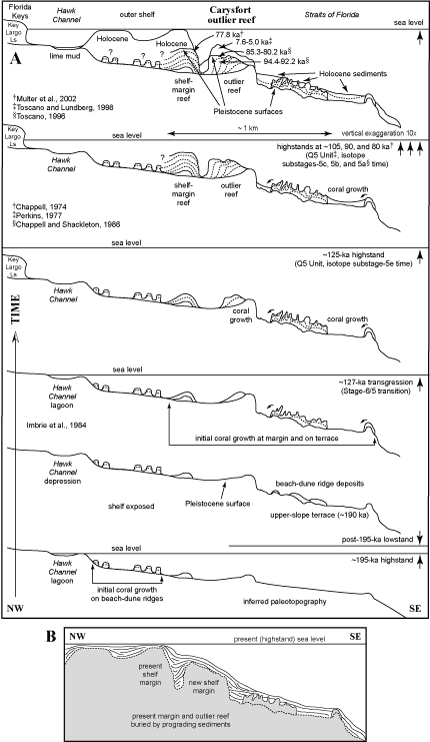FISC - St. Petersburg
Figure 36. (A) Model shows shelf and margin evolution in the area of Carysfort Reef, based on seismic-reflection and coral-age data (ages >125 ka modified from Lidz, 2004). Horizontal scale and vertical exaggeration apply to features at and seaward of the shelf margin based on the seismic profile (Fig. 35; Lidz et al., 2003). Shelf features are based on the Marker G core transect across two coral ridges (Fig. 34A; Shinn et al., 1977a) and are not drawn to scale. Up arrows indicate the seven periods of sea-level highstands that produced coral reef ecosystems on the Florida shelf in the last 325 ka. Ls = limestone. ka = thousands of years. Holocene = the most recent 10 ka. Q1-Q5 Units = names assigned by Perkins (1977) to the five marine sections that compose the most recent part of the south Florida Pleistocene rock record. Marine-isotope substages refer to periods of time that correspond to major changes in the paleotemperature record (Fig. 37A, 37B). Short curved arrows indicate landward sediment transport and infilling of backreef troughs. (B) With continued sedimentation, the future geologic record at the Carysfort outlier reef would show a progradational margin with multiple lateral sections of landward- and seaward-dipping beds on either side of two buried, parallel, coral reef trends. The buried reef trends would represent a coalesced reef-complex margin (Lidz, 2004).
|
Can't see the printable PDF version? Get the free Adobe Acrobat® Reader. |
